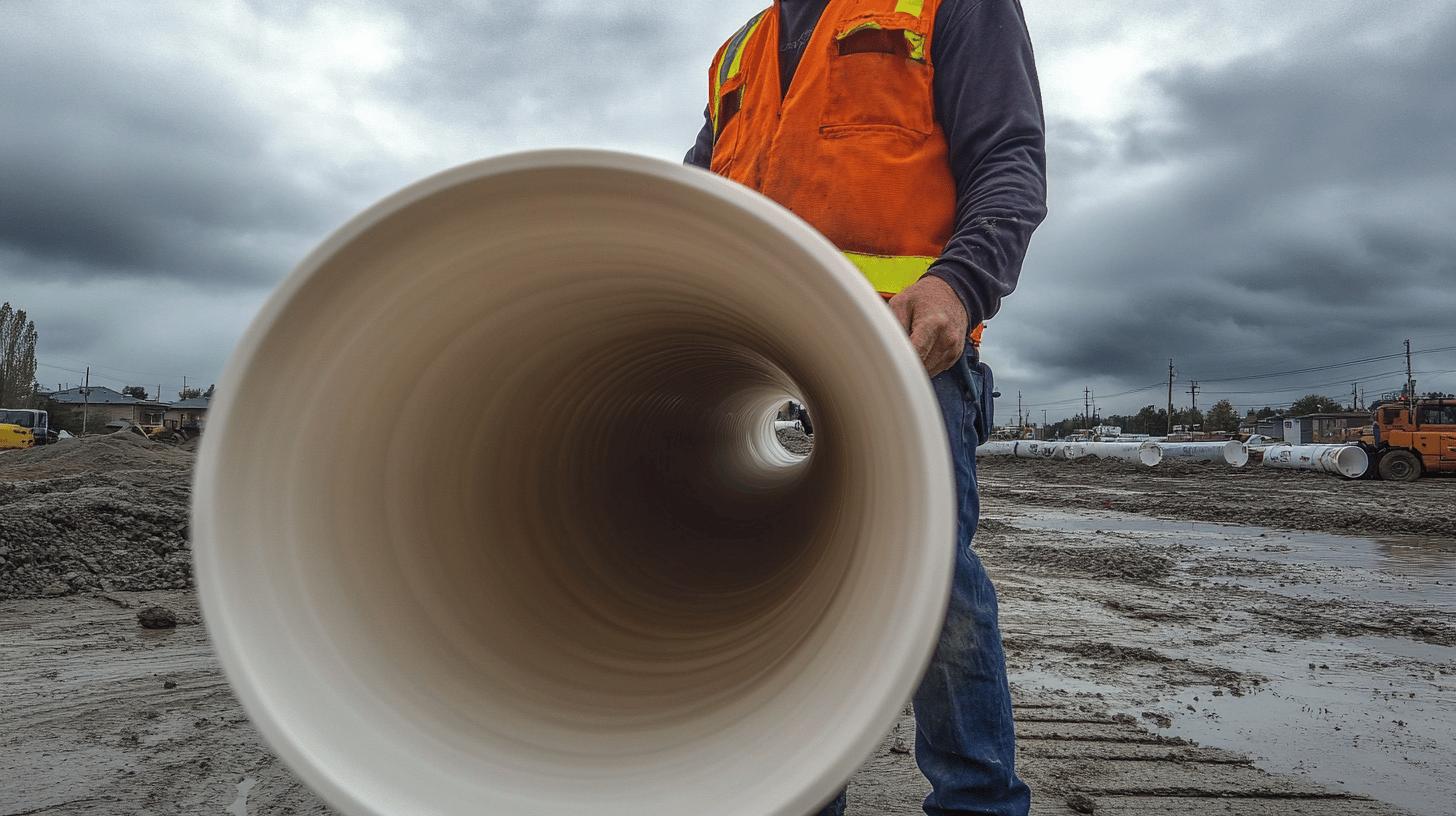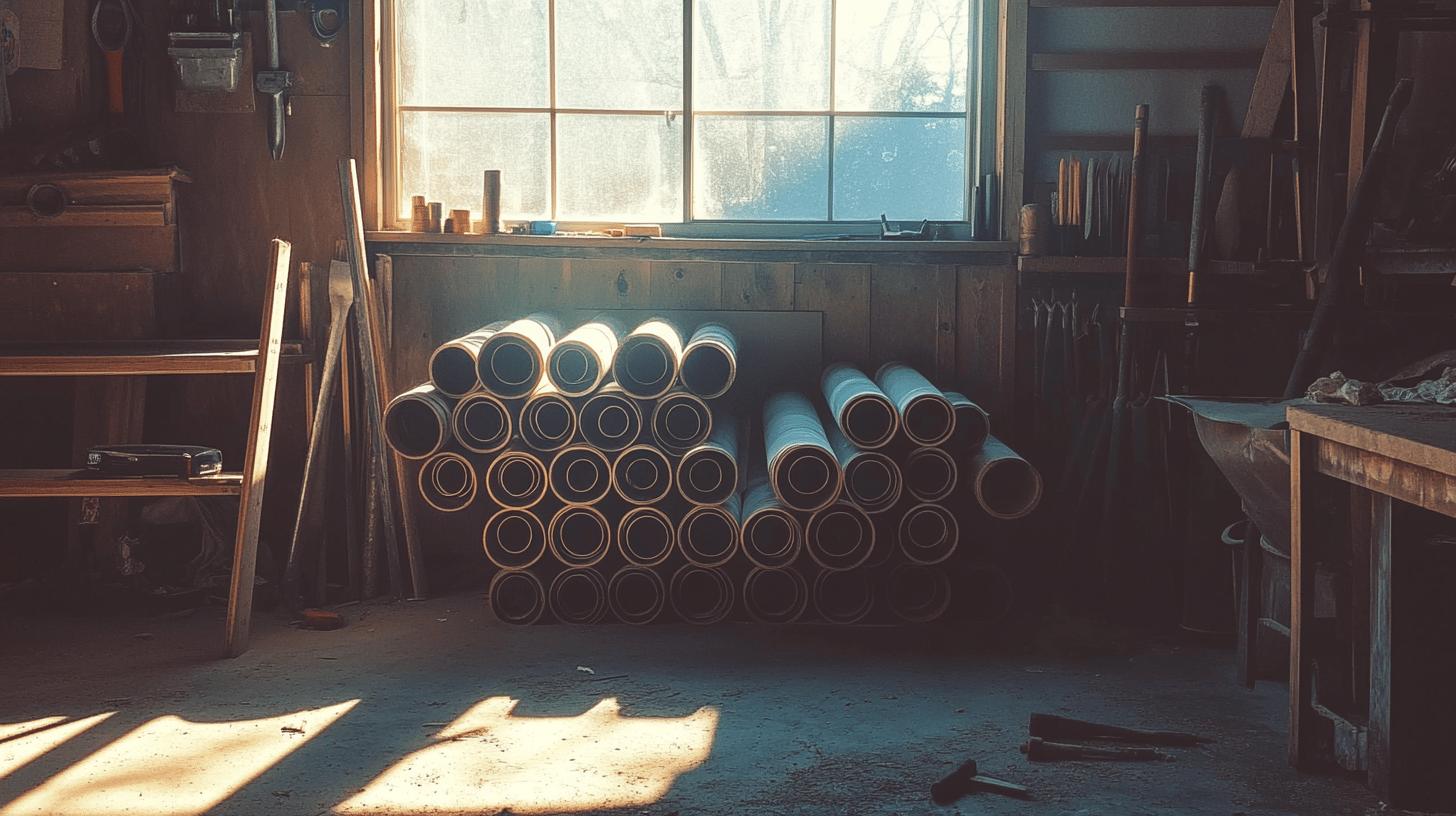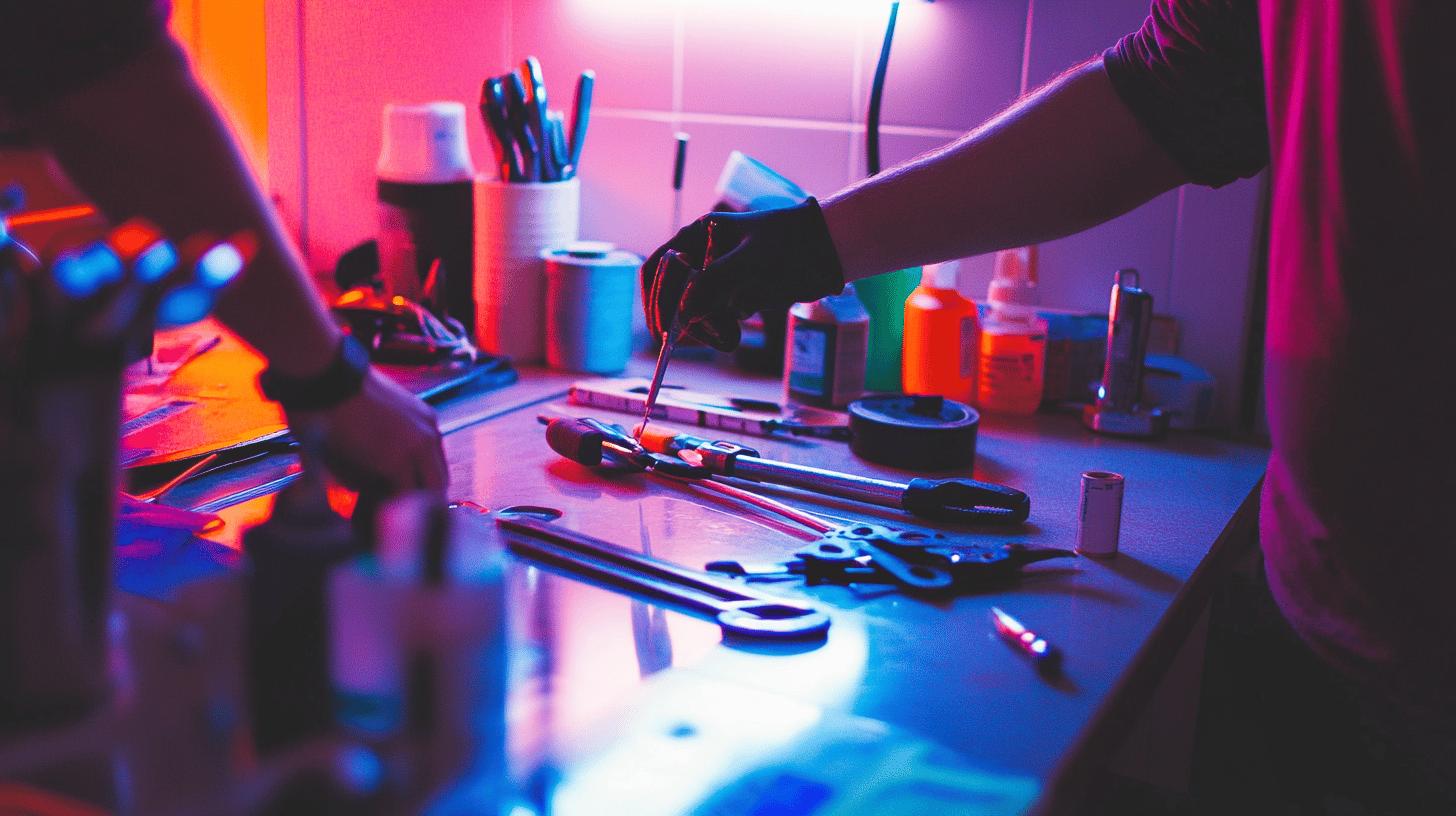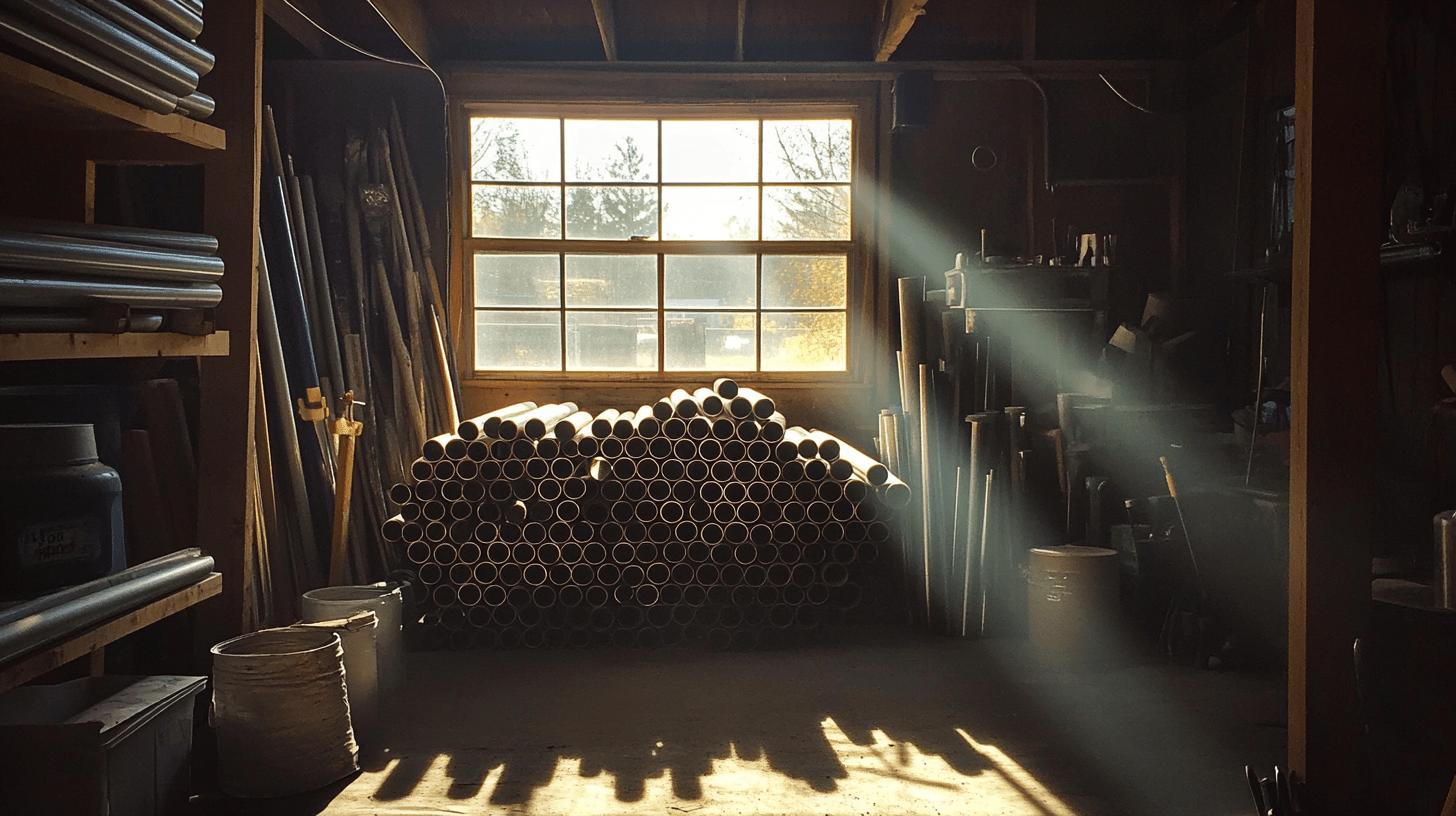TL;DR:
- PVC (polyvinyl chloride) is widely used in plumbing for over 70 years.
- Common applications: DWV systems, stormwater drainage, residential waste lines, pool plumbing.
- Benefits: durable, corrosion-resistant, cost-effective, lightweight, and non-reactive.
- Limitations: degrades in UV light, brittle in extreme cold, unsuitable for hot water.
- Installation must include priming and cementing; avoid skipping primer, insufficient cement, and ignoring curing time.
- Compared to galvanized metal and cast iron, PVC is lighter and easier to handle but can’t withstand high temperatures.
- Follow building codes and safety regulations for safe use.
- Regular maintenance includes inspections, proper waste disposal, and monitoring water pressure.
Is PVC a game-changer in plumbing, or does it have its drawbacks? For over 70 years, PVC (polyvinyl chloride) has been a go-to choice in plumbing due to its affordability, durability, and ease of installation. It’s especially favored in drain, waste, and vent (DWV) systems, as well as in new constructions. This blog post will explore the strengths and limitations of PVC in plumbing projects, review installation techniques, and compare it with alternative materials. Ready to discover why PVC remains a standout in modern plumbing solutions? Let’s dive in!
Can PVC Be Used for Plumbing: An Overview
PVC (polyvinyl chloride) has been a crucial plumbing material for over 70 years. Its popularity comes from its durability, cost-effectiveness, and easy installation. When it was first introduced, PVC offered a strong alternative to traditional plumbing materials. It’s primarily used in drain, waste, and vent (DWV) systems. Many new homes incorporate PVC because of its resistance to corrosion and lightweight design, making it a preferred choice for both plumbers and homeowners.
- Drain systems for wastewater removal
- Vent systems to maintain air pressure
- Residential waste lines
- Stormwater drainage
- Pool and spa plumbing
PVC is a top choice in modern plumbing thanks to its many advantages over other materials. Its non-reactive nature guarantees longevity, while its corrosion resistance enhances the lifespan of plumbing systems. Additionally, PVC is affordable and easy to handle, making installations quicker and reducing labor costs. These features make PVC a practical option for a wide range of plumbing tasks in both residential and commercial settings, ensuring reliability and durability.
Benefits and Limitations of PVC in Plumbing

PVC pipes offer several advantages in plumbing, making them a popular choice. They are durable, corrosion-resistant, and cost-effective, which makes them ideal for a wide range of projects, both residential and commercial. These traits ensure reliability and long-lasting performance in various plumbing applications.
- Durable and resistant to environmental stressors
- Lightweight for easy handling and installation
- Budget-friendly, saving on material and labor costs
- Non-reactive to most chemicals, providing stability
Despite its advantages, PVC has limitations. It can degrade when exposed to UV light, becoming brittle in cold temperatures, which makes it unsuitable for high-heat applications. These factors must be carefully considered when determining its use in specific plumbing situations.
- Degrades with prolonged UV exposure
- Brittle in extreme cold, risking cracks
- Unsuitable for hot water or high-pressure tasks
Understanding PVC’s advantages, such as durability and cost-effectiveness, along with its limitations, is essential for making informed plumbing choices. Knowing when to utilize PVC contributes to building reliable and long-lasting plumbing systems.
Installation Guidelines and Best Practices for PVC Plumbing
Proper installation of PVC pipes is essential for ensuring a reliable, leak-free system. Using incorrect techniques can lead to joint failures and expensive repairs. By employing the right methods from the start, you can enhance the longevity and performance of your plumbing. Professional plumbers utilize techniques like priming and cementing to create strong PVC connections, delivering durability and peace of mind that may not be achievable with DIY methods.
Priming and Cementing
Priming and cementing are vital in PVC installation. Follow these steps:
- Clean the surfaces: Ensure the pipe and fitting are clean and dry for a strong bond.
- Apply primer: Use a primer to soften surfaces, prepping them for cement.
- Spread the cement: Coat both parts with cement evenly for a secure fit.
- Join and twist: Insert the pipe, twisting a quarter turn to distribute cement and seal.
Common Mistakes to Avoid
Errors in installation can lead to leaks and system failures. Avoid these mistakes for a strong setup:
- Skipping primer: Can weaken joints, causing leaks.
- Insufficient cement: May lead to poor sealing.
- Ignoring curing time: Testing too soon can fail joints; allow adequate curing.
- Wrong tools: Ratchet cutters can cause microcracks; use a metal saw.
Avoiding these mistakes is crucial for creating a robust and long-lasting PVC plumbing system. By prioritizing professional installation methods, you ensure effective and resilient plumbing solutions that stand the test of time.
Comparing PVC with Other Plumbing Materials

In plumbing, PVC is frequently compared to galvanized metal and cast iron, and it’s often preferred for several reasons. PVC is corrosion-resistant and easier to handle, making it a popular choice. Additionally, it’s lighter than metals, which leads to quicker and more cost-effective installation. Its durability and non-reactive nature make it a long-lasting solution for a variety of plumbing needs.
| Material | Advantages | Disadvantages |
|——————-|————————————————|———————————————|
| PVC | Corrosion-resistant, lightweight, cost-effective | UV degradation, brittle in extreme cold |
| Galvanized Metal | Strong, durable, handles high pressure | Rust-prone, heavy, hard to install |
| Cast Iron | Long-lasting, great soundproofing | Heavy, pricey, rusts over time |
PVC is often favored for its ease of installation and resistance to corrosion. While galvanized metal and cast iron provide benefits such as durability and soundproofing, their weight and susceptibility to rust can be drawbacks. The advantages of PVC, including its lightweight nature and low maintenance, make it a practical choice for plumbing projects.
Safety and Code Compliance for PVC in Plumbing
PVC is favored in plumbing for its cost-effectiveness and easy installation, but it’s essential to follow safety guidelines. Can PVC handle high-temperature water systems? No, it isn’t suitable for high heat and can warp or fail. Therefore, it should only be used for cold water lines, drains, waste, and vent systems to ensure safety and efficiency.
Building Codes and Regulations
Following building codes is crucial for safe PVC use. Codes ensure installations are safe and durable.
- Temperature Restrictions: PVC can’t be used for hot water beyond local code limits.
- Pressure Ratings: Adhere to pressure limits to prevent leaks and ruptures.
- Fire Safety Measures: Meet fire codes, especially in tall buildings.
Health considerations are important when using PVC plumbing. While PVC is generally safe, improper use can pose risks, such as drinking water contamination if pipes aren’t certified for potable use. Always confirm that PVC products meet health and safety standards to prevent potential hazards.
PVC Plumbing Maintenance Tips

Regular maintenance is essential for keeping PVC plumbing systems efficient. Why is it important to maintain PVC pipes? Proper upkeep helps prevent clogs and extends the life of the system. Routine checks and educating users on best practices ensure smooth operation and prevent costly repairs down the line.
- Dispose of waste properly: Avoid flushing improper items down the toilet.
- Regular inspections: Look for leaks or wear to address problems early.
- Clean drains: Use non-corrosive cleaners to prevent blockages.
- Monitor water pressure: Keep within safe limits to avoid pipe stress.
- Protect from extremes: Insulate exposed pipes to prevent brittleness and cracks.
Teaching users about proper waste disposal and conducting regular checks can greatly minimize plumbing issues. When households are informed, they help maintain the health of the plumbing system, leading to fewer repairs and less disruption overall.
Final Words
In summary, PVC stands out as a dependable option for plumbing, particularly in drain, waste, and vent systems. Its durability and cost-effectiveness are significant advantages, though it’s essential to account for its sensitivity to temperature fluctuations and UV light. Ensuring proper installation and following safety standards are crucial for maximizing its long-term performance.
When compared to other materials, PVC provides considerable benefits, making it a popular choice in various applications. Maintenance of PVC systems is relatively easy yet vital. Understanding these elements answers the question of whether PVC can be used for plumbing and informs effective usage. Use these insights to achieve the best results in your plumbing projects.
FAQ
Can PVC be used for plumbing fittings?
PVC can be used for plumbing fittings, especially in drain, waste, and vent systems. It is favored for its durability and cost-effectiveness, particularly in new construction projects.
Can PVC be used for plumbing in Florida?
PVC can be used in Florida’s plumbing systems due to its durability and resistance to corrosion, making it suitable for the state’s humid climate.
Are PVC pipes safe for drinking water?
PVC pipes are generally safe for drinking water when used according to plumbing codes. However, CPVC is recommended for hot water systems.
Why is PVC not used for plumbing?
PVC is not used in some plumbing applications due to its brittleness in cold temperatures and unsuitability for high-temperature water systems.
Is PVC okay for residential plumbing?
PVC is widely accepted for residential plumbing for drain, waste, and vent applications due to its cost-effectiveness and ease of installation.
Can you use PVC pipe for plumbing?
PVC pipe can be used for plumbing, especially for waste, drainage, and vent lines, but not for hot water systems where higher temperature pipes, like CPVC, are preferred.
What happens if you use PVC instead of CPVC?
Using PVC instead of CPVC for hot water plumbing can lead to failure because PVC lacks the necessary heat resistance for high-temperature applications.

